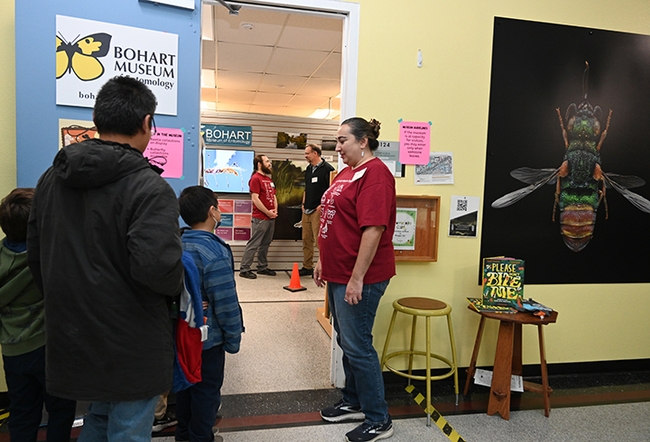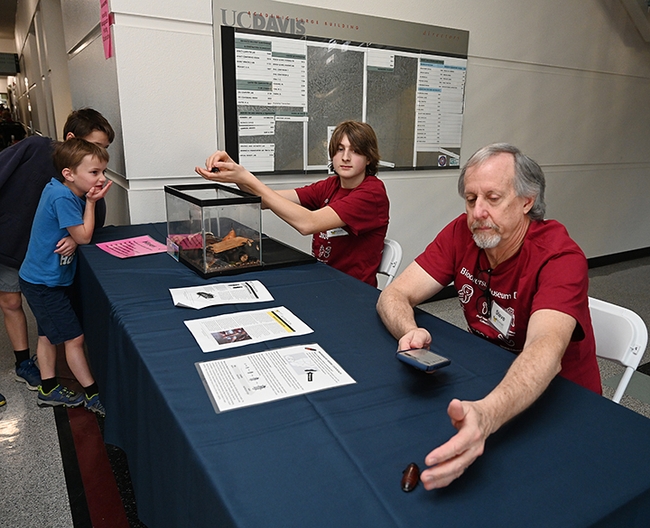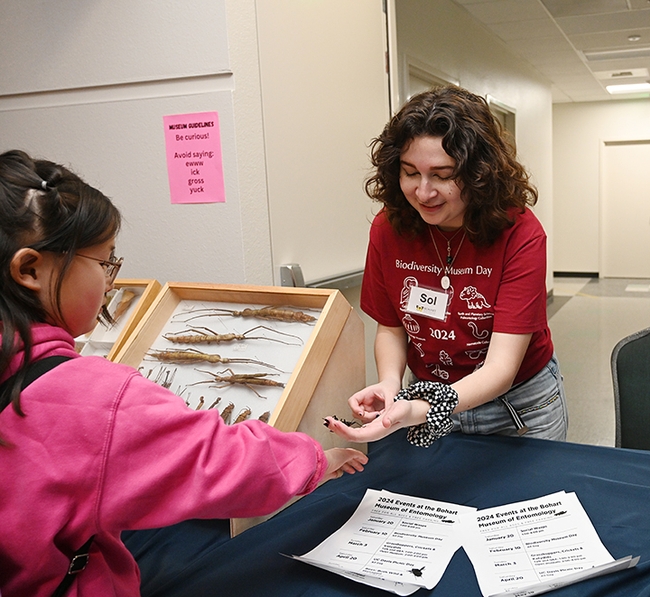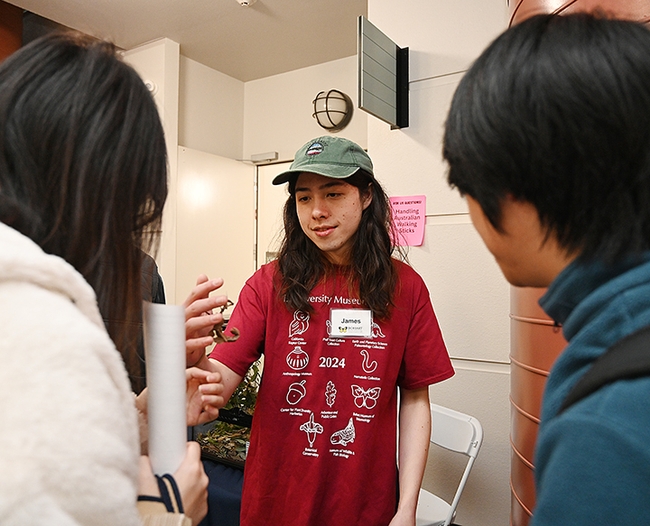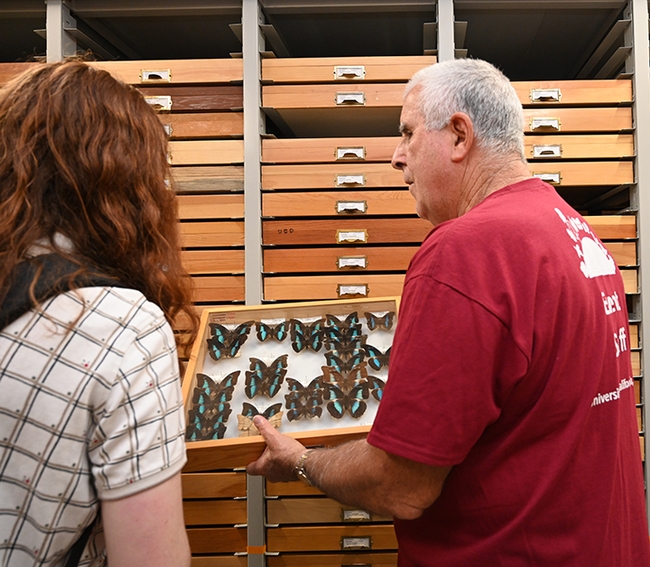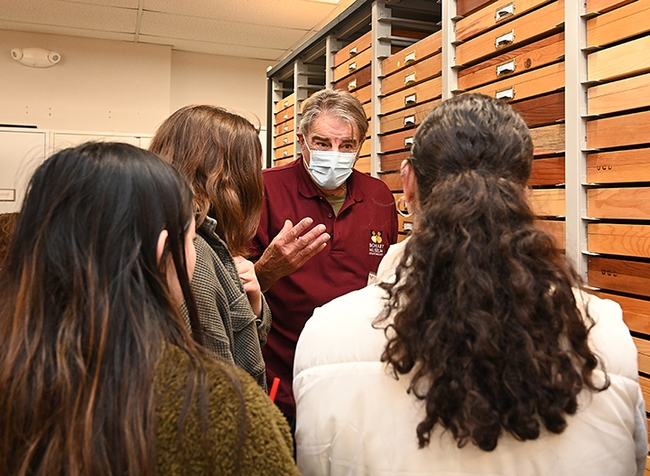- Author: Kathy Keatley Garvey
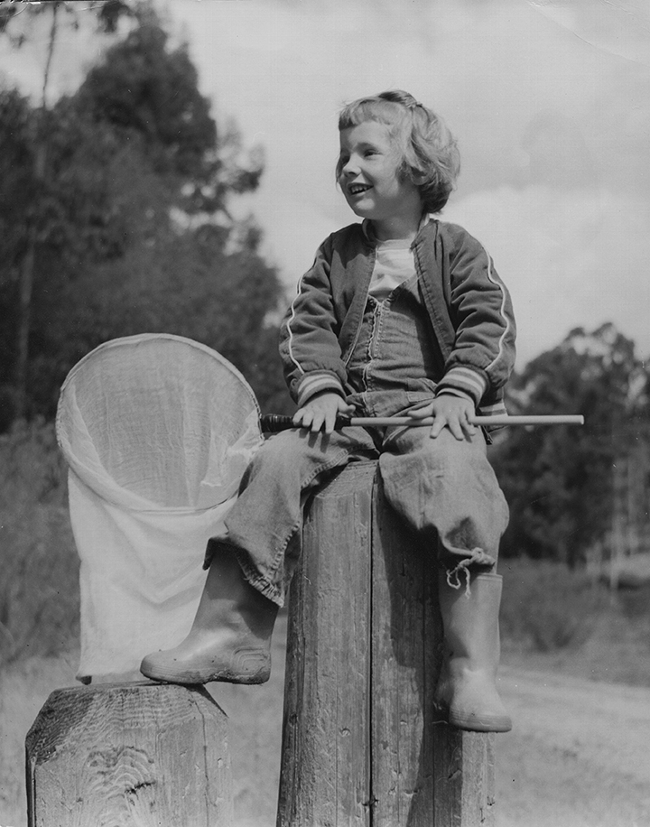
Give them a 21-insect net salute.
That's what occurred at a recent retirement celebration honoring the legacy of UC Davis distinguished professor emerita Lynn Kimsey, director of the Bohart Museum of Entomology for 34 years.
Kimsey, who joined the UC Davis Department of Entomology (now the Department of Entomology and Nematology) in 1989, became the director of the Bohart Museum in 1990.
Noted entomologist Richard "Doc" Bohart (1913-2007) founded the insect museum in 1946. UC Davis Chancellor James Meyer (1922-2002) dedicated the facility in 1986 as "the Bohart Museum of Entomology" at a ceremony in Briggs Hall. A highlight: Faculty, postdoctoral fellows, graduate students and others saluted him with a 21-insect net salute. They lined up, formed an archway with their nets, and Professor Bohart walked under the archway.
Kimsey, who was Bohart's last graduate student, recalled that event "as one of the funniest memories" of her career when she delivered a speech last November at the Davis College of Agricultural and Environmental Sciences (CA&ES) event honoring recipients of its excellence awards. Kimsey received the Exceptional Faculty Award.
Kimsey retired on Feb. 1, 2024 (but she's still doing research and continues to be the executive director of the Bohart Museum Society and the writer-editor-publisher of the quarterly Bohart newsletter.)
Then came the retirement celebration on April 6. Her colleagues, collaborators, faculty, staff and students gathered in a Mathematics Building classroom on Crocker Lane for speeches, and then headed over to the nearby Bohart Museum for the 21-insect net salute, a buffet and more tributes.
As Kimsey walked beneath the archway of the 21-insect net salute leading into the Bohart Museum, a chorus of cheers and applause greeted her.
She always remember that.
Just as she remembers the first insect net she received at age 5.
“I've always been interested in insects," Kimsey said. "I got my first insect net at age 5.” A portrait of her holding that net graces the Bohart Museum.
Under Kimsey's direction, the Bohart Museum that "Doc" Bohart founded 78 years ago expanded from 400 specimens to some eight million insect specimens today. It is the seventh largest insect collection in North America.
A recognized authority on biodiversity, systematics and biogeography of parasitic wasps, urban entomology, civil forensic entomology, and arthropod-related industrial hygiene, Kimsey holds two entomology degrees from UC Davis: a bachelor's degree (1976) and a doctorate (1979). "I got to pursue my bug interests," she said. "I know it was kind of weird, but even as a little kid it was fun."
It still is, Kimsey told the crowd at her retirement celebration.
The new Bohart Museum director is arachnologist and Professor Jason Bond, the Evert and Marion Schlinger Endowed Chair in the Department of Entomology and Nematology and associate dean, College of Environmental Sciences (CA&ES).
Resources:
- Access the UC Davis Entomology and Nematology website for the retirement celebration story.
- Listen to Kimsey's speech recorded by Walter Leal, UC Davis distinguished professor of molecular and cell biology and former chair of the Department of Entomology. It is posted on X (formerly Twitter) at https://x.com/wsleal2014/status/1776732932901863666)
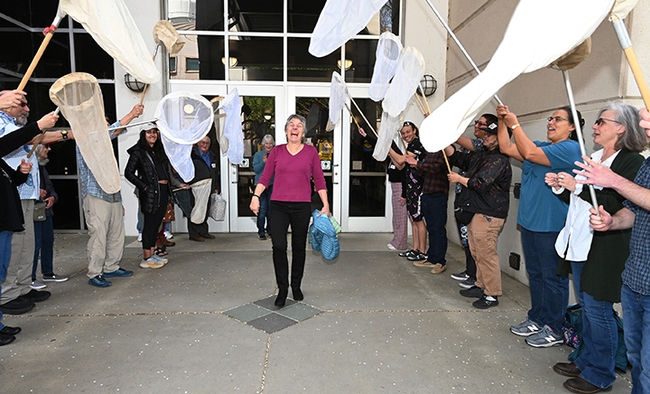
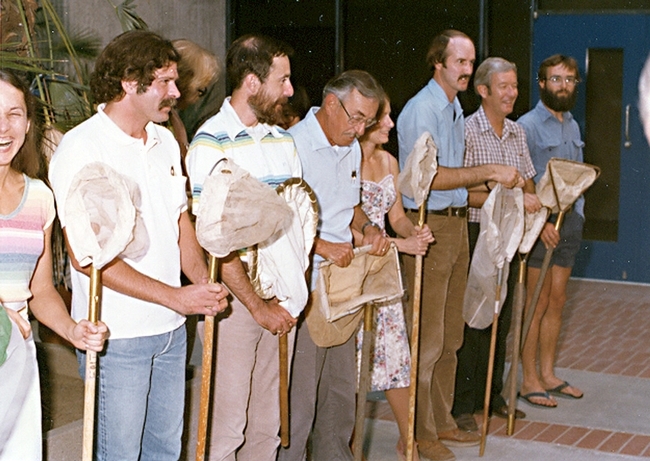
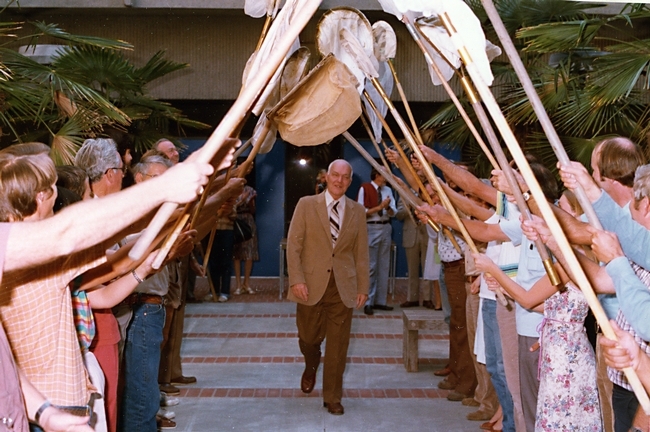
- Author: Kathy Keatley Garvey
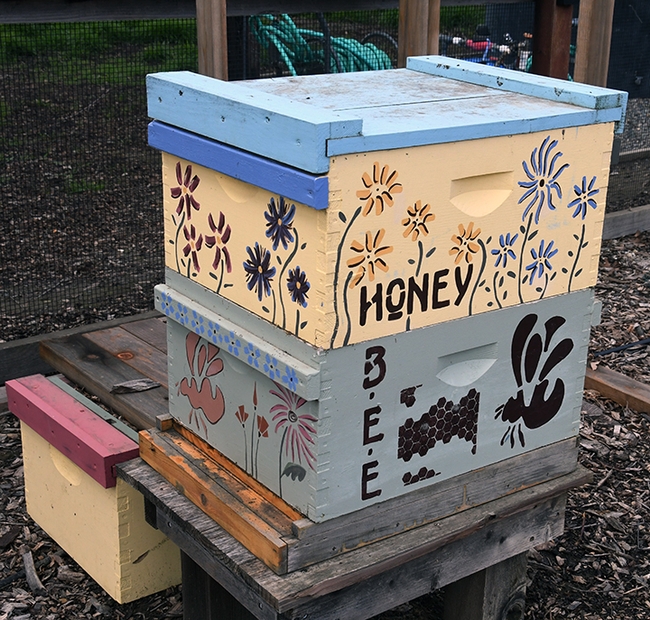
No, wait. Catch...examine...and then release.
That's what attendees will do at the UC Davis Bee Haven's 15th anniversary celebration, set from 10 a.m. to noon on Saturday, April 6 on Bee Biology Road, west of the central campus.
They'll be using a bee vacuum device to scoop up a honey bee, carpenter bee, bumble bee or other pollinator for close observation.
The half-acre garden is located next to the Harry H. Laidlaw Jr. Honey Research Facility. Both are part of the UC Davis Department of Entomology and Nematology.
The open house, free and family friendly, will include a tour of the garden at 11 a.m.; catch-and-release bee activity to observe bees up close; information about low-water plants; and presentations on University of California pollinator research.
The haven is open daily from dawn to dusk (no admission). It is described as "a unique outdoor museum that provides resources for local bee pollinators, inspires and educates visitors to create pollinator habitat gardens, and provides a site for the observation and study of bees and the plants that support them."
Director of the garden is Elina Lastro Niño, associate professor of Cooperative Extension - Apiculture, UC Davis Department of Entomology and Nematology. Christine Casey is the manager, the academic program management officer.
Workers installed the garden in the fall of 2009, under the tenure of interim department chair Lynn Kimsey, now UC Davis distinguished professor emerita, and with primary funds from the Häagen-Dazs ice cream brand. Featuring a series of interconnected gardens with names like “Honeycomb Hideout,” “Nectar Nook” and “Pollinator Patch,” it was designed to provide the Laidlaw honey bees with a year-around food source, raise public awareness about the plight of honey bees, encourage visitors to plant bee-friendly gardens of their own, and serve as a research site.
A six-foot worker bee sculpture of ceramic and mosaic anchors the garden. It's the work of self-described "rock artist" Donna Billick of Davis. UC Davis distinguished professor Diane Ullman and Billick co-founded and directed the UC Davis Art-Science Fusion Program, and their art and that of Ullman's entomology students, as well as members of the community and other volunteers, are showcased throughout the garden.
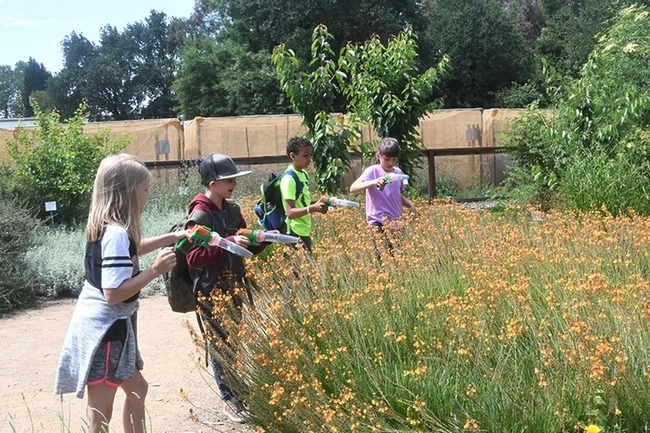
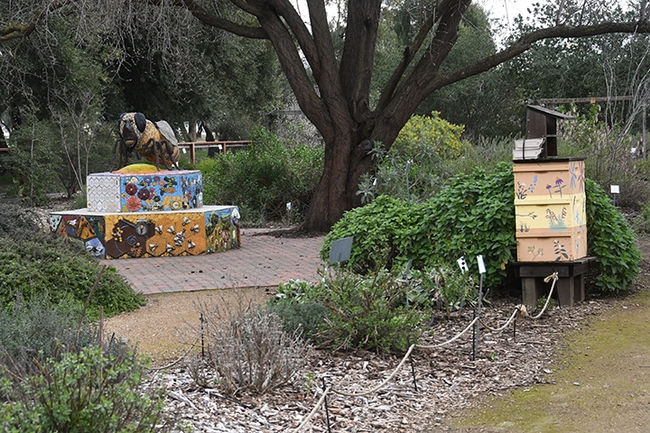
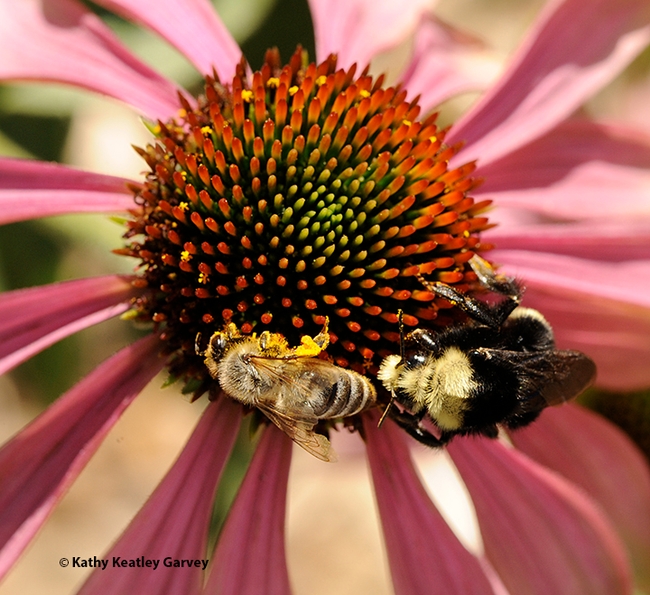
- Author: Kathy Keatley Garvey
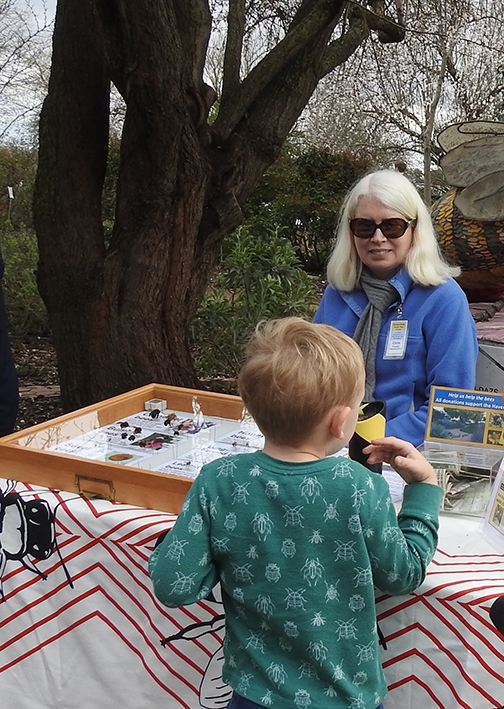
That's when the UC Davis Department of Entomology and Nematology will celebrate the 15th anniversary of its bee garden with an open house from 10 a.m. to noon. It's free and family friendly.
The half-acre garden is located next to the Harry H. Laidlaw Jr. Honey Research Facility on Bee Biology Road, west of the central campus.
The open house will include a tour of the garden at 11 a.m.; catch-and-release bee activity to observe bees up close; information about low-water plants; and presentations on University of California pollinator research.
Open from dawn to dusk (free admission), the Bee Haven is described as "a unique outdoor museum that provides resources for local bee pollinators, inspires and educates visitors to create pollinator habitat gardens, and provides a site for the observation and study of bees and the plants that support them."
Director of the garden is Elina Lastro Niño, associate professor of Cooperative Extension - Apiculture, UC Davis Department of Entomology and Nematology. Christine Casey is the manager, the academic program management officer.
The garden was installed in the fall of 2009, under the tenure of interim department chair Lynn Kimsey, now UC Davis distinguished professor emerita, and with primary funds from the Häagen-Dazs ice cream brand. Featuring a series of interconnected gardens with names like “Honeycomb Hideout,” “Nectar Nook” and “Pollinator Patch,” it was designed to provide the Laidlaw honey bees with a year-around food source, raise public awareness about the plight of honey bees, encourage visitors to plant bee-friendly gardens of their own, and serve as a research site.
“This garden is a living laboratory to educate, inspire and engage people of all ages in the serious work of helping to save honey bees,” said Dori Bailey, then director of Haagen-Dazs Consumer Communications.
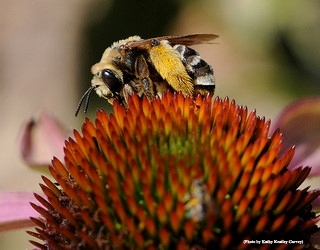
Art graces the garden, thanks to the UC Davis Art/Science Fusion Program, founded and directed by entomologist-artist Diane Ullman, UC Davis distinguished professor of entomology; and Davis-based artist Donna Billick. Billick, a self-described "rock artist," sculpted the six-foot-long worker bee that anchors the haven. Students and area residents crafted the bee-motif ceramic tiles that line a bench, which also includes the names of major donors.
A mural featuring native bees graces the shed in the garden. It was a project of the Entomology 1 class, "Art, Science and the World of Insects," taught by Ullman and Billick. Then doctoral student Sarah Dalrymple of the Rick Karban lab, served as the graphics project coordinator and teaching assistant, guiding the students on design, creation and installation of the panels. She went on to be named the 2011 recipient of the UC Davis Outstanding Graduate Student Teaching Award and praised for fusing the boundaries of biology, art and culture.
The Bee Haven came to "bee" after officials at the Haagen-Dazs read a research news story on honey bees, written by communication specialist Kathy Keatley Garvey and telephoned her. The article, on "building a better bee," chronicled the plight of honey bees and the work of bee breeder-geneticist Susan Cobey, then manager of the Harry H. Laidlaw Jr. Honey Bee Research Facility and now with Washington State University. Haagen-Dazs served as the primary donor of the garden and also funded the Häagen-Dazs Postdoctoral Fellowship at UC Davis. It went to Michelle Flenniken, an insect virus researcher based at UC San Francisco. She is now a professor at Montana State University.
Links:
Sausalito Team Wins Design Competition
http://ucanr.edu/blogs/blogcore/postdetail.cfm?postnum=15240
Grand Opening Celebration of Honey Bee Garden
http://ucanr.edu/blogs/blogcore/postdetail.cfm?postnum=15249
Eagle Scout Project: Fence Around the Bee Garden
http://ucanr.edu/blogs/blogcore/postdetail.cfm?postnum=10166
Campus Buzzway: Wildflowers
http://ucanr.edu/blogs/blogcore/postdetail.cfm?postnum=15242
Haagen-Dazs Honey Bee Haven: Sacramento Bee Award
(With photo of founding volunteers)
http://ucanr.edu/blogs/blogcore/postdetail.cfm?postnum=10205
Shedding Light on Native Bees
https://ucanr.edu/blogs/blogcore/postdetail.cfm?postnum=27570
For more information on the UC Davis Bee Haven, access the website at https://beegarden.ucdavis.edu.
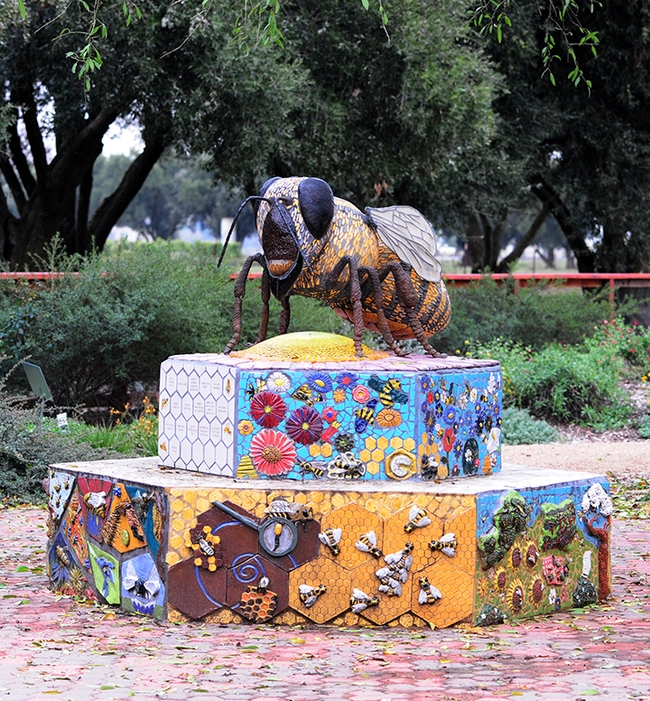
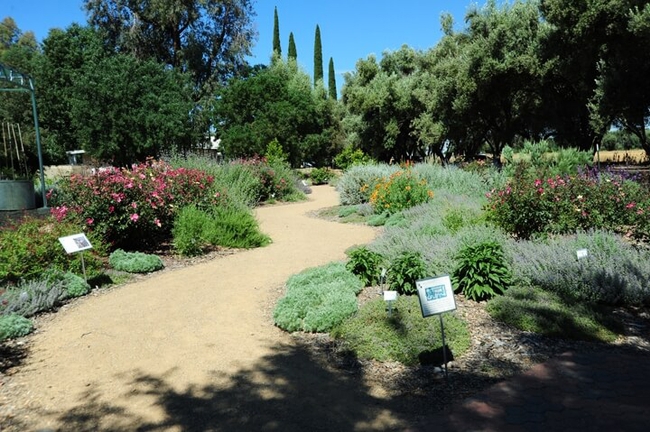
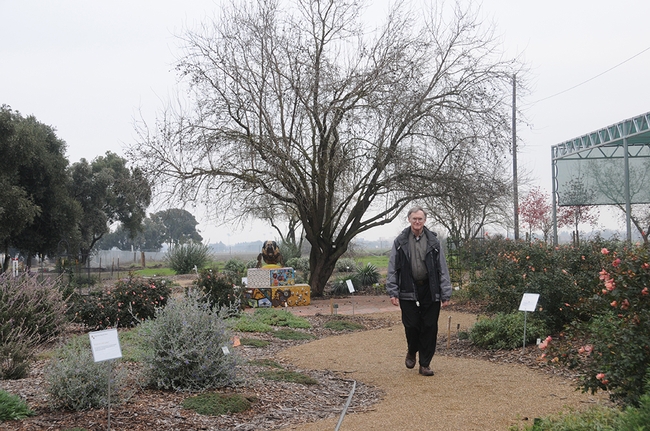
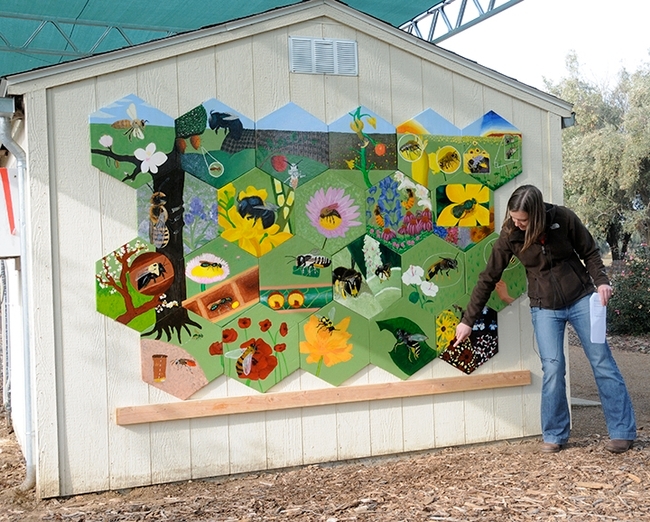
- Author: Kathy Keatley Garvey
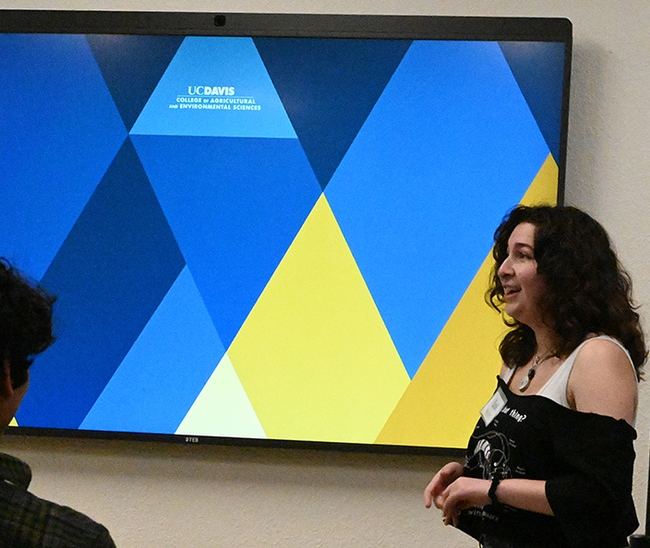
UC Davis third-year entomology student Sol Wantz, an intern at the Bohart Museum of Entomology, president of the UC Davis Entomology Club, and an undergraduate researcher in the Neal Williams' lab, shed light on "Grasshoppers, Crickets and Katydids" when she delivered a presentation at a recent Bohart Museum open house.
Jerusalem crickets, aka "potato bugs," drew the most interest.
The wingless insects, members of the family, Stenopelmatidae, are omniverous, feeding on both plants and animals, Wantz told the crowd. They are ground-dwelling insects found "mostly in North America, some in Asia and Africa," she said, and they include 7 genera and 67 species.
"They have a unique method of sound production," Wantz said. "They thump their abdomen against the ground to produce a surprisingly loud noise. Their thumping patterns can be used to identify their species."
Sol, who grew up in the Bay Area community of Belmont, is the first entomologist in her family. "My parents and brother all love insects, but I am the only one hoping to make a career out of entomology."
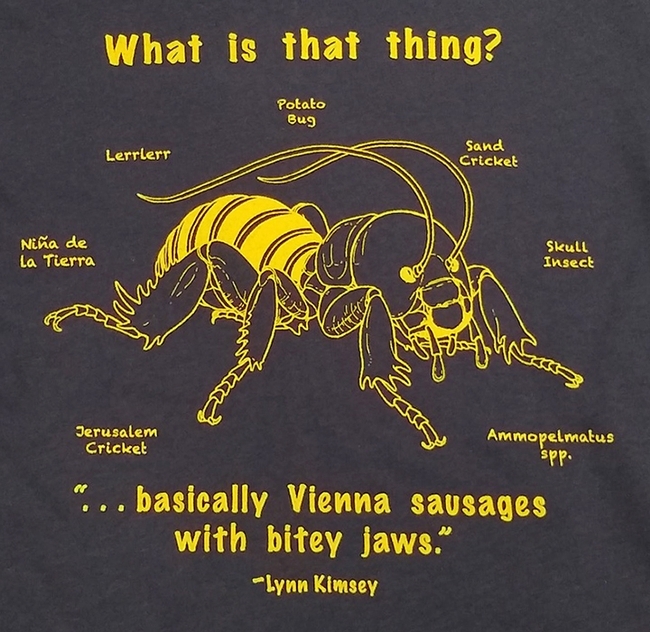
Jerusalem Cricket T-Shirt. The Bohart Museum sells a Jerusalem cricket t-shirt in its gift shop, the result of so many queries beginning with "What is that thing?" Kimsey's humorous answer, "basically Vienna sausages with bitey jaws," appears on the shirt. The art is the work of UC Davis student and Bohart volunteer Allen Chew, and the design by UC Davis doctoral alumnus Professor Fran Keller of Folsom Lake College, a Bohart Museum scientist.
Wantz also discussed grasshoppers and katydids. "The katydid genus Supersonus produces the highest frequency sound of any known animal, up to 150 kHz!" she said. "For reference, humans can only hear between 0 and 20 kHz."
Wantz grew up in the Bay Area community of Belmont. "My parents and brother all love insects, but I am the only one hoping to make a career out of entomology." Her parents, Adam Wantz and Patti Leggett-Wantz, were among those attending the seminar.
The Bohart Museum, located in Room 1124 of the Academic Surge Bulding, 455 Crocker Lane, is directed by Professor Jason Bond, the Evert and Marion Schlinger Endowed Chair in Insect Systematics, UC Davis Department of Entomology and Nematology; and associate dean of the UC Davis College of Agricultural and Environmental Sciences.
Two-Week Public Closure. Due to staff shortage, spring break, and winter quarter finals, the Bohart Museum will be closed to the public (walk-ins) for the next two weeks, Monday, March 18 through Friday, March 29. Previously scheduled group tours will continue to take place those two weeks. For more information, access the website at https://bohart.ucdavis.edu.
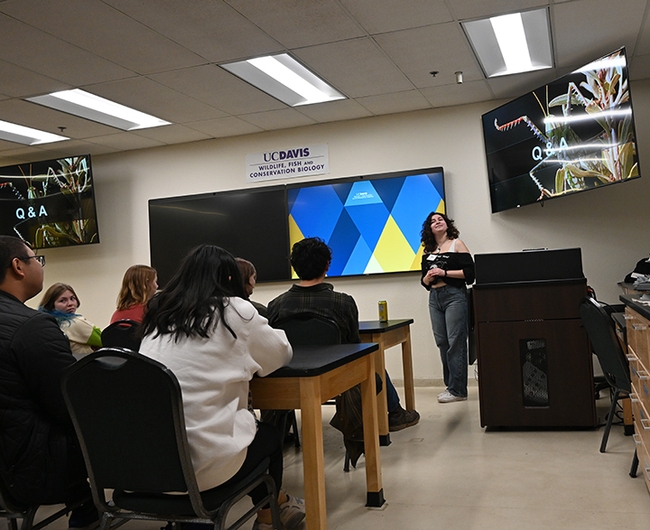
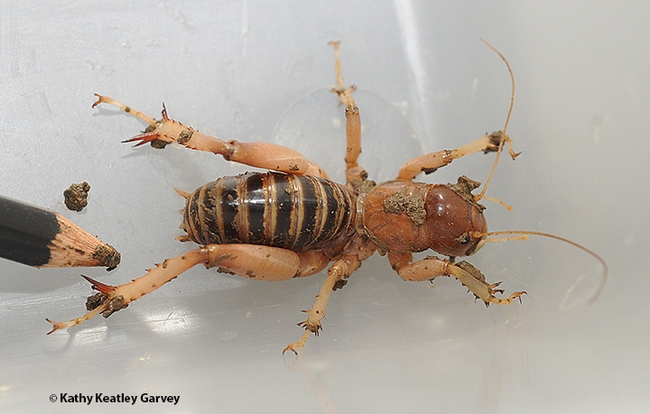
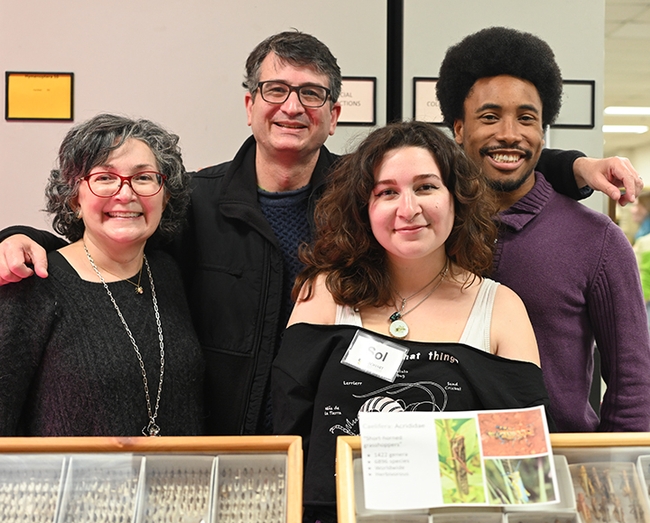
- Author: Kathy Keatley Garvey
They came. They saw. They held out their hands.
Hands? Yes, to hold Madagascar hissing cockroaches and stick insects (walking sticks).
The Bohart Museum of Entomology greeted some 1400 visitors during the 13th annual UC Davis Biodiversity Museum Day, an event held Feb. 10 and showcasing 10 museums or collections across campus.
The Bohart Museum houses a global collection of eight million insect specimens, plus a live petting zoo ("the hissers" and "the sticks") and an insect-themed gift shop stocked with T-shirts, hooded sweatshirts, books, posters, stuffed animals, jewelry and insect-collecting equipment.
The entrance to the Bohart features a 5x6-foot photograph of a cuckoo or emerald wasp, commonly known as "the ruby-tailed wasp." It's the work of noted British photographer Levon Bliss. The microscupture encompasses more than 8,000 separate images.
Inside, Jeff Smith, who curates the Lepidoptera collection, and Bohart associate Greg Kareofelas, answered questions about the butterfly and moth specimens.
New director of the Bohart Museum is professor and arachnologist Jason Bond, the Evert and Marion Schlinger Endowed Chair, UC Davis Department of Entomology and Nematology, and associate dean, UC Davis College of Agricultural and Environmental Sciences. Bond succeeds UC Davis distinguished professor emerita Lynn Kimsey, who served as director from 1999 until Jan. 31, retiring on Feb. 1. Kimsey continues her research and in serving as executive director of the Bohart Museum Society.
The next open house at the Bohart Museum will be from 1 to 4 p.m., Sunday, March 3. The theme: "Grasshoppers,Crickets and Katydids." A talk is planned from 1 to 2 p.m., with the museum open from 2 to 4 p.m.
The Bohart Museum also is planning its annual open house for the annual UC Davis Picnic Day on Saturday, April 20.
Founded in 1946 by UC Davis professor Richard Bohart, the insect museum is located in Room 1124 of the Academic Surge Building, 455 Crocker Lane. More information is on its website or by contacting bmuseum@ucdavis.edu.
